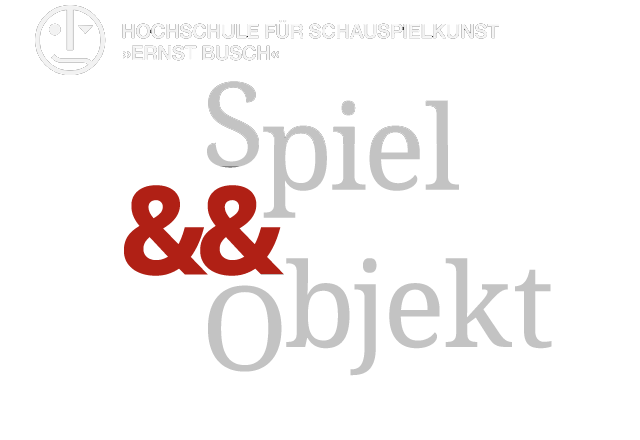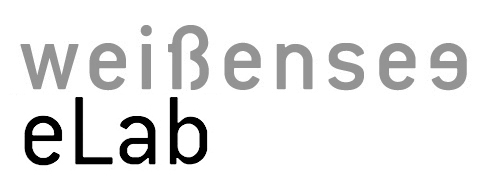Conductive Materials
Meet the Materials

ETextiles rely on the existence of electrically conductive fibers, threads and fabrics that can be used in combination with textile techniques such as sewing, weaving and knitting. Most of these conductive materials are produced by industry for anti-static and EMF shielding purposes. The development and production of materials for crafting soft circuits and sensors is […]
Merino Wool conductive yarn from Bart and Francis

Recently I have noticed bart and francis has merino wool / inox conductive yarn. (https://www.bart-francis.be/index.php?item=–150-meter_cone&action=article&group_id=128&aid=4531&lang=EN) This sounds really interesting! I have ordered it immediately, and just have got the package. Here is the first try out of the measurement and comparison to the plug and wear conductive yarn. The spec of the yarn is “82% […]
Elastic Conductive Thread
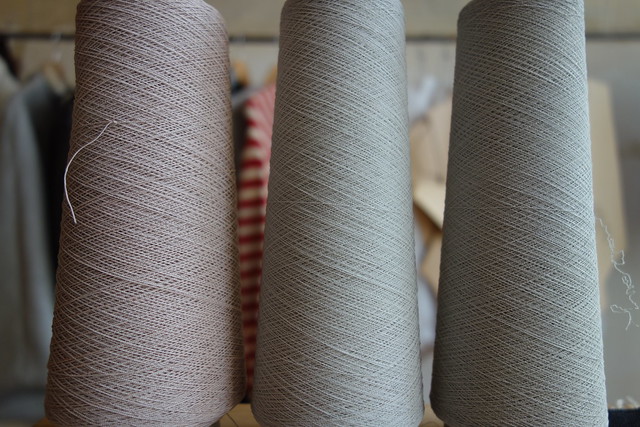
We very kindly received samples of this elastic conductive thread made with Statex conductive thread from Filix in France. We have not had time to use/test them for anything yet, but will post about it here as soon as we do. SC 4194 ECRU NF CC LY800 DC SS35µ+Cu40-PA2/78/68 Core : LYCRA 800 DTEX Cover […]
Shopping List: Basic E-Textile Materials

New manufacturers and distributors are always popping up and disappearing again. In this post we try to list some of our most used e-textile materials and where we purchase. Since we are based in Berlin/Germany we try to order as much as possible from local manufacturers and distributors/redistributors. We even started a list of super […]
Sparkfun finally selling Eeontex!
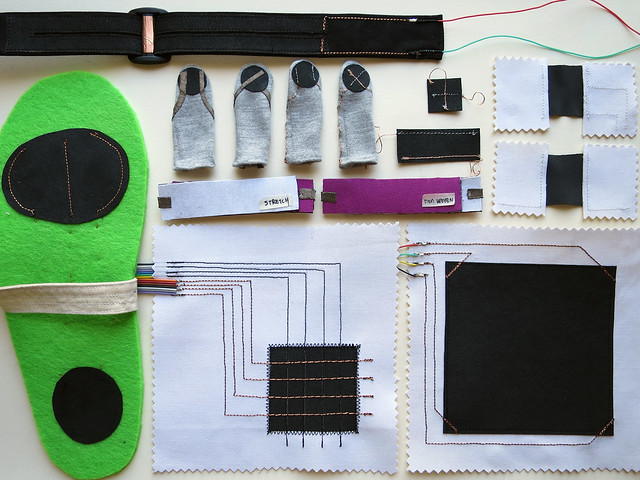
Sparkfun is finally retailing a selection of 3 different Eeontex fabrics (made by Eeonyx) in small quantities.
Zebra Zebra Fabric (X-Zebra, Y-Eeonyx)
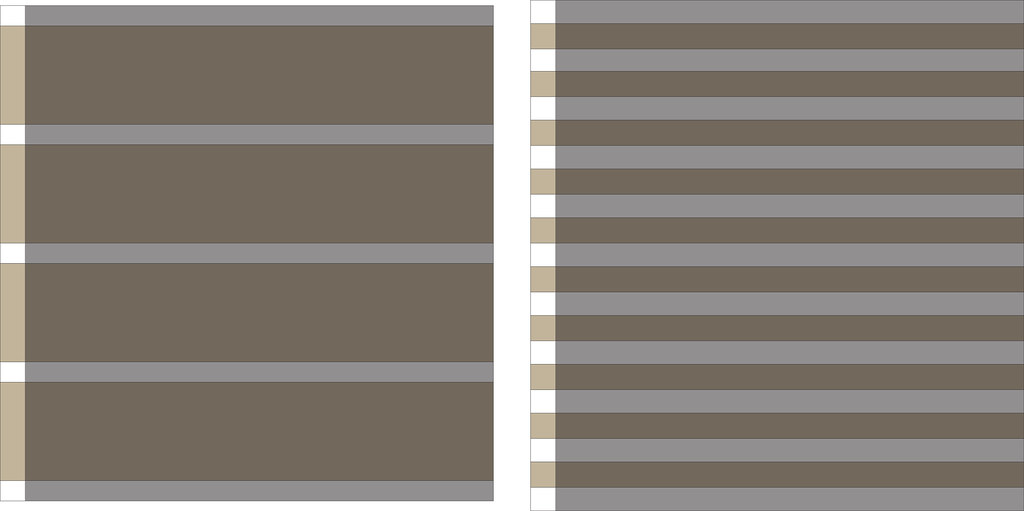
Inspired by the availability of Zebra fabric and the fact that Eeonyx can coat a variety of materials in their secret resistive/piezoresistive formula, this post is about an idea for a fabric, that will hopefully “come true”.
Conductive/Piezoresistive Leather!

Leather coated Adjon with Eeonyx’s secret conductive polymer formula, not only makes the leather conductive but also gives it piezoresistive (pressure and stretch sensitive) properties similar to other EeonTex fabrics and Velostat.
Multi-Conductor Fabrics
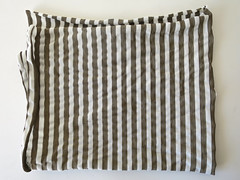
This post summarizes various conductive fabrics and narrow-fabrics that have separated areas of conductivity. This can be a useful property to have when looking to make multi-wire connections or matrices.
Conductive Wool

Conductive wool is perfect for felting. It is very fine conductive fibers (steel) mixed with normal wool, or with polyester. The one with wool works better for felting. I have purchased this from Bekaert Bekinox W12/18 Bekinox PES 12/50
stretch conductive fabric comparison
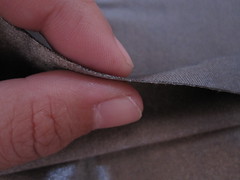
I have recently ordered sparkfun conductive fabric (MedTex180), which is similar to LessEMF stretchy fabric but much thicker and stiffer. The structure of the fabric is more like a rib than Lycra. The front side is very shiny and you can see the rib structure from the back side. It stretches very well on once […]
Conductive Play-Doh

Conductive and non-conductive play-doh recipes by Dr. AnnMarie Thomas and Samuel Johnson.
Conductive Fabric Substitute

Aluminum foil used with fusible interfacing is a great inexpensive and super available substitute for conductive fabrics.
Conductive Tapes

A variety of conductive fabric, copper and aluminum tapes are available. Some have conductive adhesive and some not. Some make good electrical connections by simply overlapping ends, and some do not. Copper tape is great for soldering to.
Conductive Threads
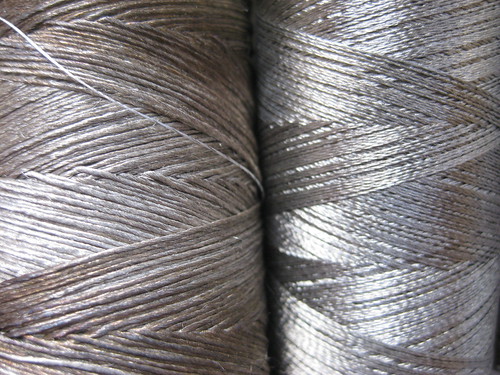
also see: conductive yarn Conductive threads are usually manufactured for anti-static, electromagnetic shielding, intelligent textiles, wearable technology, data transfer and heating purposes. Most threads are metalized with an alloy of various metals, which can include silver, copper, tin and nickel. The core is normally cotton or polyester. Conductive threads are uninsulated and sewing them tightly […]
Conductive Pen
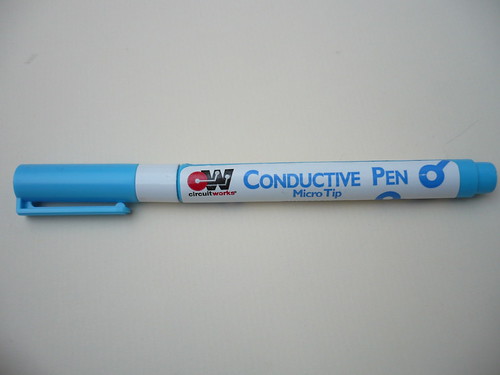
Conductive pens are intended for small fixes and can be used to connect conductive fabric that is not solderable to the metal pins of a components. But we have found them to be finicky and a slight pain. Instead we recommend the range of conductive paints and inks listed in this post: >> Conductive Paints […]
Anti-static Foam

also: Resistive foam, ESD foam, black conductive polyurethane foam, dissipative foam Comes with sensitive electronic chips and components. Available in various densities, soft or stiff. Good for pressure sensing.
Resistive Paper

Black conductive paper used for electrostatic field mapping. >> http://store.pasco.com/pascostore/showdetl.cfm?&DID=9&Product_ID=1821&Detail=1
Metal Fasteners

Many traditional fabric fasteners are metal and great for making electrical plugable connections. these include hooks and loops, hook clasp, magnetic clasps and screw and socket clasps, buttons, zippers (with conductive zipper tape from Shieldex)… These also include metal poppers, which are covered in an extra post.
Resistive and Piezoresistive Fabrics
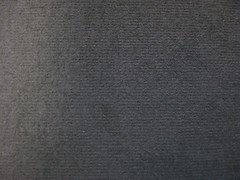
Resistive fabrics tend to have an increasing resistance across distance and are great for making potentiometers and location sensors. Piezoresistive fabrics are often also resistive across distance (x,y) but have a resistance that decreases under pressure (mechanical stress) through the material (z). These materials are great for making pressure, bend and often stretch sensors. There […]
Resistive Rubbers
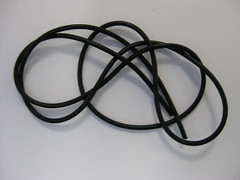
Conductive rubbers can be used for pressure, bend and stretch sensors. Because of their materiality they offer a nice haptic feedback, without the need for other squishy materials.
Headers
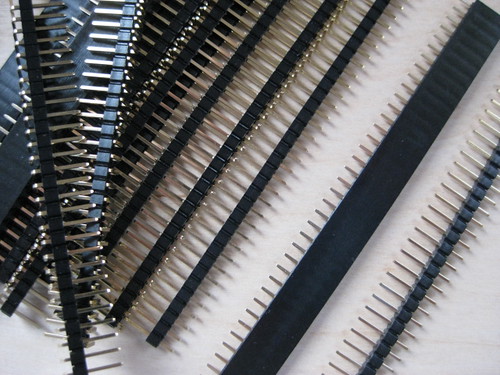
(German: Stiftleiste, Buchsenleiste) These come in very handy for making plugable connections. Though hopefully with time these will be replaced with more sewable alternatives, for now they are an okay solution. It is nice to get the break-away option, as this saves time cutting them with the knife and losing the ones in between.
Perfboard
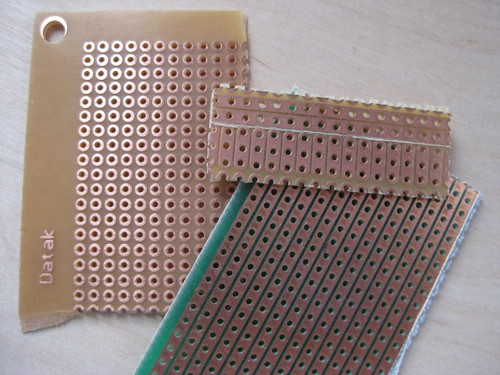
Perforated Circuit Board, also called Solderable Breadboard. An acrylic board with holes drilled every 4mm spacing for electronic components. this is also about the minimum distance for spacing when sewing with conductive thread. Perfboards with copper line patterns are great for making small circuits and then sewing to them (by hand) with thread that is […]
Conductive Paints and Inks

The biggest problem with conductive paints and inks is that they crack and loose their conductivity on fabric because the surface of fabric is porous and uneven. To print on stretch fabrics is an even bigger issue that might be resolved by combining the paints with flexible materials such as latex, silicone or fabric mediums. […]
Fine Steel Wool

By felting together natural and steel wool it is possible to make conductive felt and from this a pressure sensitive variable resistor. This project is a nice project by Thomas Gerhardt using this principal. >> http://thomas-gerhardt.com/itp/FeltResistor/
Thin Flexible Wire
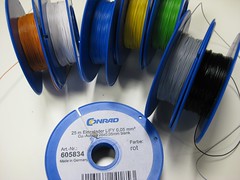
While conductive thread is so good for so many e-textile purposes, sometimes insulated wire can come in handy. Finding really thin, flexible wire is not always easy, especially when shopping online, so here are some links to some of the resources we have found useful.
Metal Beads
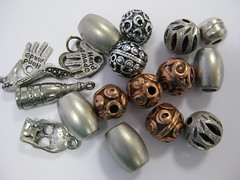
Heavy metal beads are great for making tilt sensors. They can be used in combination with smaller metal beads or non-conductive glass, plastic or ceramic beads. You can also make your own conductive beads, either by shaping them from some stiff metal wire and possibly soldering them to add enough solder to make them heavy. […]
Cheap Electronic Toys

The circuits found inside cheap electronic toys, especially sound toys, can become very useful when you want small circuits. You can not customize them as much as planning and programming your own, but these come cheap, quick and easy to cut down to a bare minimum and embed in a garment.
Graphite Powder
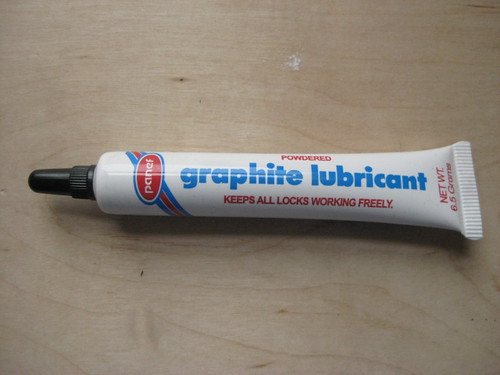
We have so far unsuccessfully used graphite powder to make our own stretchy conductive glue or paint. But it is possible to make non-stretch glue/paint by mixing graphite powder and liquid tape together.
Velostat

also: anti-static bag, ESD bag Velostat is a piezoresistive material, meaning it’s electrical resistance decreases when pressured. When sandwiched between two conductive layers, it has a wonderful range for making pressure and bend sensors. It can also be used for resistive sensing over distance, position sensing. Velostat is a back, opaque, volume-conductive, carbon-impregnated polyolefin. The […]
Conductive Fabrics
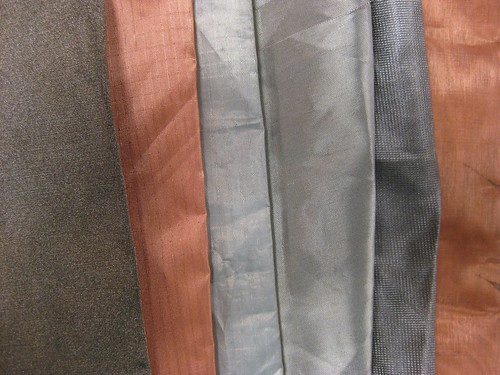
also see: Connections >> Solderability Tests There are a range of different conductive fabrics available. Some of the most frequently used conductive fabrics, tend to be the most available.
Conductive Velcro

also: Hook and Loop fastener Velcro is the brand name for fabric Hook and Loop fasteners. Conductive Velcro is highly conductive and good for making switches or connections that might need to be opened and closed.
Metal Poppers
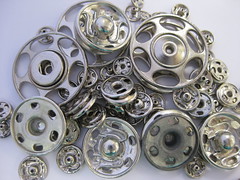
also know as: snap, snap fastener, press stud also see: Tools >> Popper Machines Metal poppers are great for making electrical connections. They are traditionally a wearable fastener. They are a washable and reliable connection method. We have found that not all metal poppers are good for solder to. White bronze, brass, PWP nickle free, […]



